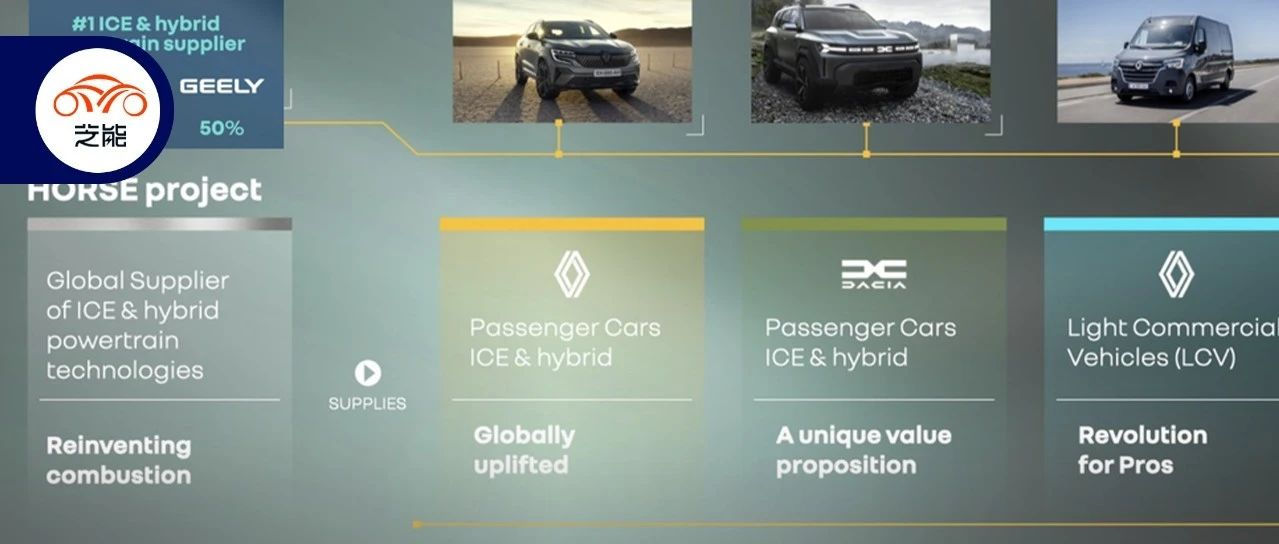Analysis of the Top 10 Electric Vehicle Achievements in the Automobile Industry by Zhineng Motors
1. Vanguard of radical transformation: Volkswagen
2. Overdrafting brand strength: BMW
3. More luxurious than luxury cars: Mercedes-Benz
4. Global sales champion with diversified development: Toyota
5. Challenger and defender: Tesla
6. Uncertainty in the development of pure electric vehicles: Honda
7. Focusing on the Chinese and American markets: General Motors
8. Stably ranking third globally despite low domestic market share: Hyundai-Kia
Finally, let’s take a look at the traditional foreign car manufacturers’ transformation in this last article: Nissan-Renault-Mitsubishi. The alliance’s overall performance in 2022 has not been particularly good, and there have been some changes in the alliance’s structure. Let’s take a comprehensive look at the data.
◎Renault: Global sales in 2022 were 2,051,174 vehicles, a decrease of 5.9%. Sales of passenger cars alone were 1.72 million, with 985,000 concentrated in Europe.
◎Nissan: Data for 2022 has not yet been released, but the U.S. market sold 729,000 units, the Chinese market sold 1,045,000 units, and the Japanese market sold 449,000 units.
Currently, Renault is primarily concentrated in Europe and Latin America, while Nissan is mainly focused on China, the United States, and Japan. The overall effect of the alliance is not significant, which is a significant problem.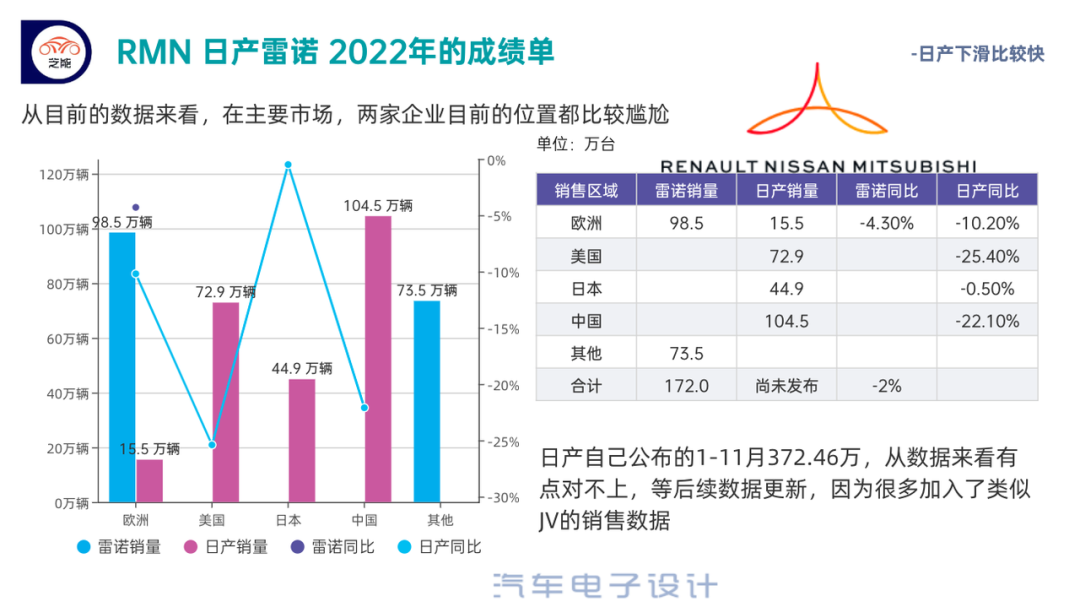
Of course, our main focus is on the actual situation of the new energy vehicles of the two companies in China, the United States, and Europe, which can better illustrate the situation. In fact, both Nissan and Renault have contributed to the development of pure electric vehicles. Both Nissan’s LEAF and Renault’s ZOE were the main models in the early stages of electric vehicles. As the group developed deeper, these old models reached the end of their life cycle, and it seemed that both companies were struggling to catch up.
Renault is now a European car company, and half of its sales are in France. It has become a regional instead of global car company. In the capital negotiations between Nissan and Renault, the two companies have made final adjustments to the agreement. The draft agreement includes temporarily entrusting shares to another company and selling them in stages to reduce Renault’s stake in Nissan from 43% to 15%. Nissan’s investment in Renault’s new EV company will be “up to 15%”, and the specific investment ratio and amount have not been determined. This is also an end to the unequal relationship between the two companies in the alliance.
Especially by separating its fuel vehicle and pure electric vehicle companies, Renault has deepened its cooperation with Geely in its fuel vehicle sector, and also destined for new changes in the industry.
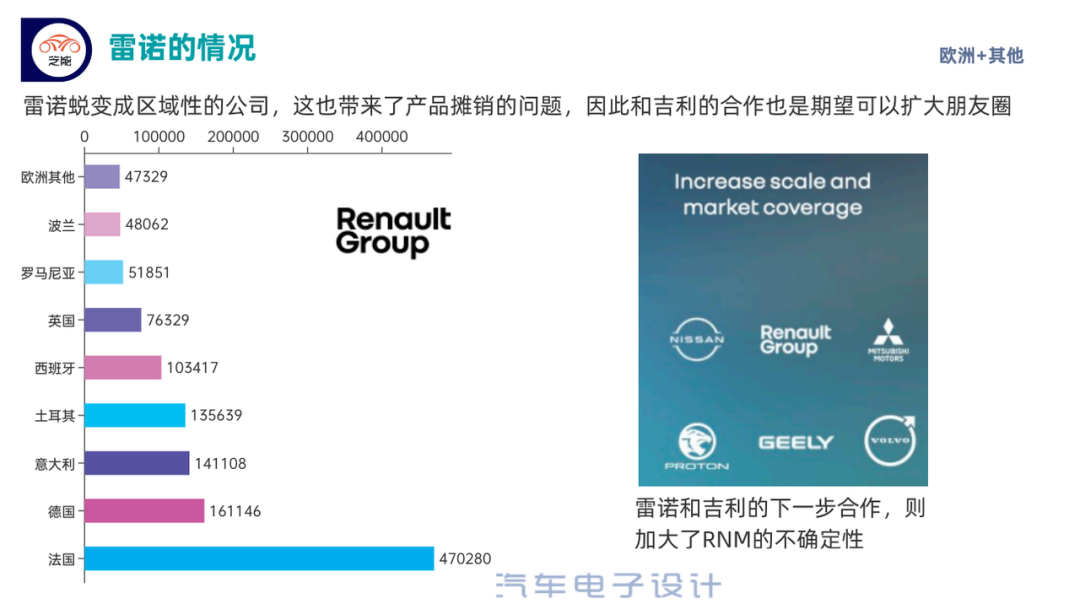
New Energy Vehicles of Renault
Renault’s market share in Europe has fallen by 0.7% to 6.4%. In terms of electrification, we can list some figures:
◎ In 2022, the sales of the E-Tech series (BEV and hybrid powertrains) grew by 9%, accounting for 39% of Renault’s European passenger car sales.
◎ The sales of the pure electric car Megane pure electric are 33,000 units.
◎ Sales of full hybrid vehicles increased by 64% to 117,000 units.
Here the entire data seems unclear. According to external data, I roughly sorted out Renault’s data registration in Europe. We found that Renault estimated to have sold about 136,000 pure electric and about 11,000 plug-ins in Europe through various associations. In 2022, it is estimated that 150,000 new energy vehicles will be sold in Europe. Among them, ZOE and Spring still account for the majority, and Megane pure electric’s 33,000 probably only accounts for a little over 20% of the total.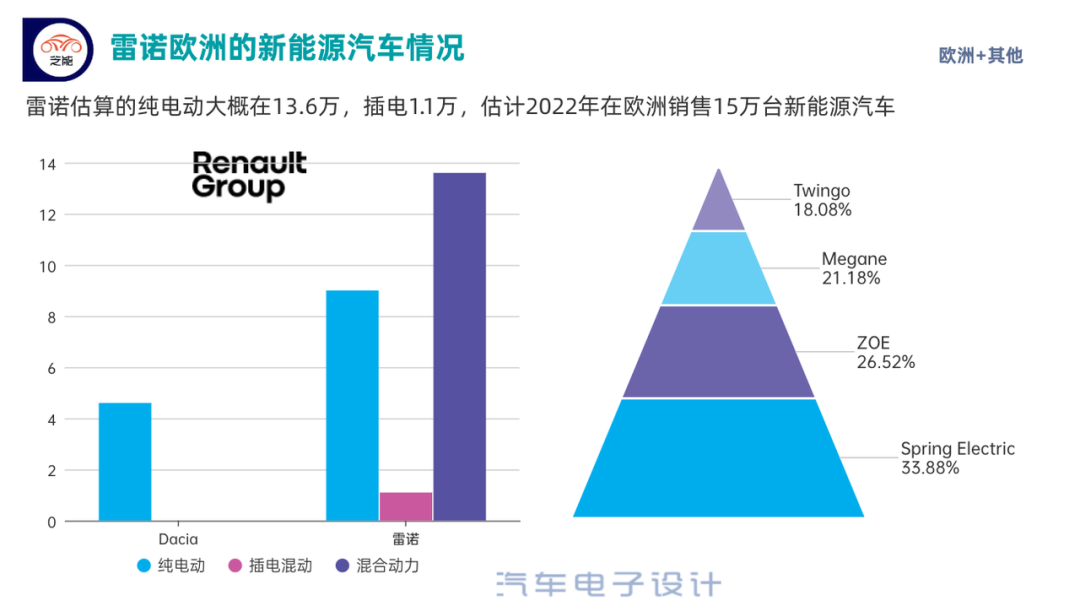
Currently, I am mainly looking at the decomposition of Renault’s two businesses. One business needs to merge with Geely’s efforts, while the other business needs strong investment from various partners. It is really difficult to incubate pure electric businesses with the cards at hand.
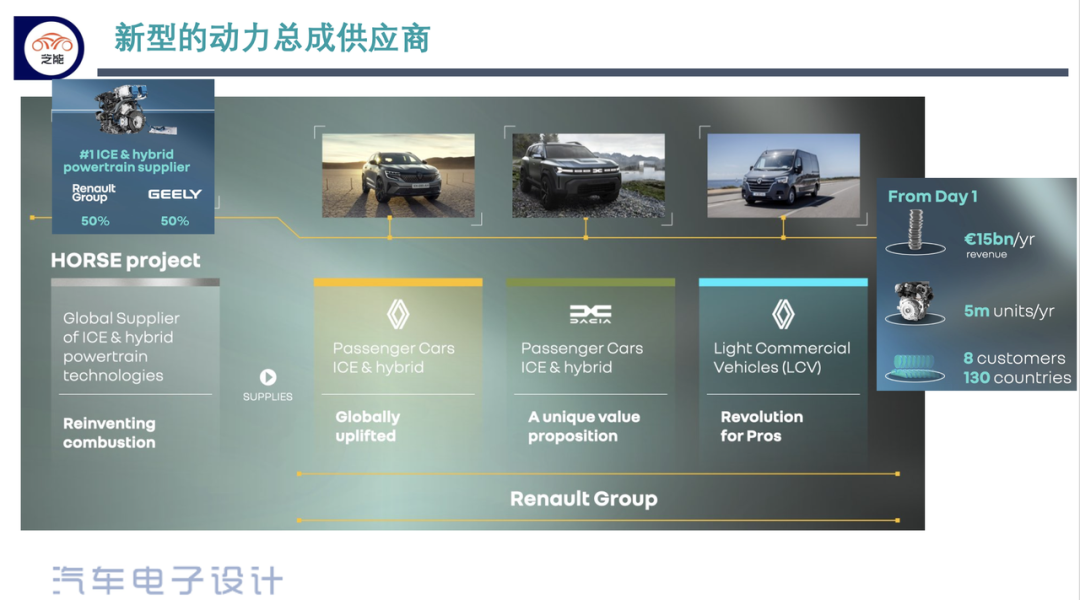
Renault’s Horse Project is determined, and I think this attempt is very hardworking.
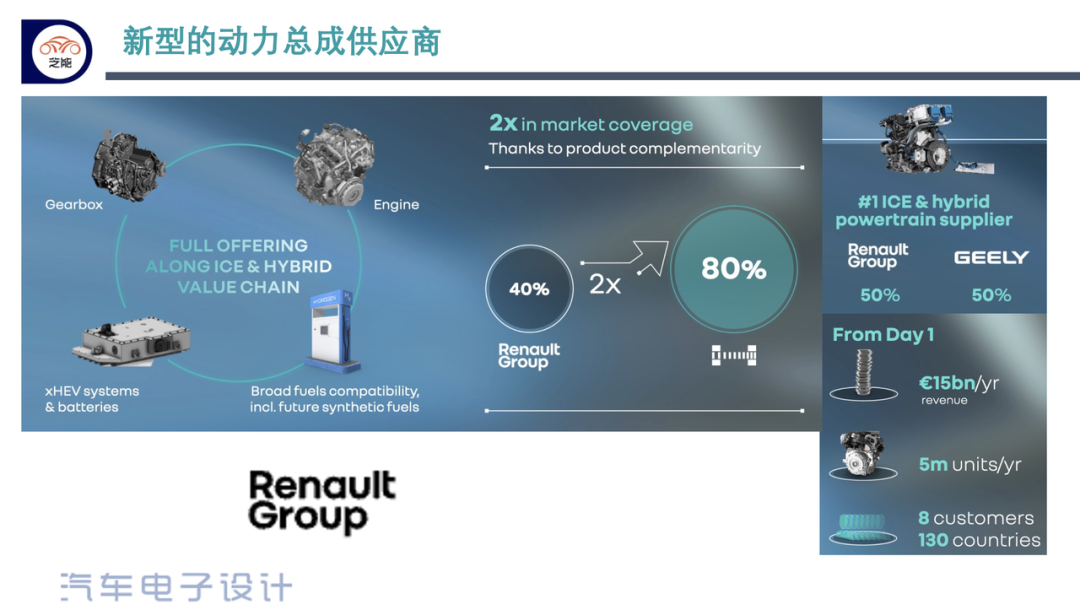
Nissan’s new energy vehicles
Nissan has sold more than 4,000 Ariya and 27,000 LEAF in Europe, so the new platform has not fully played out yet.
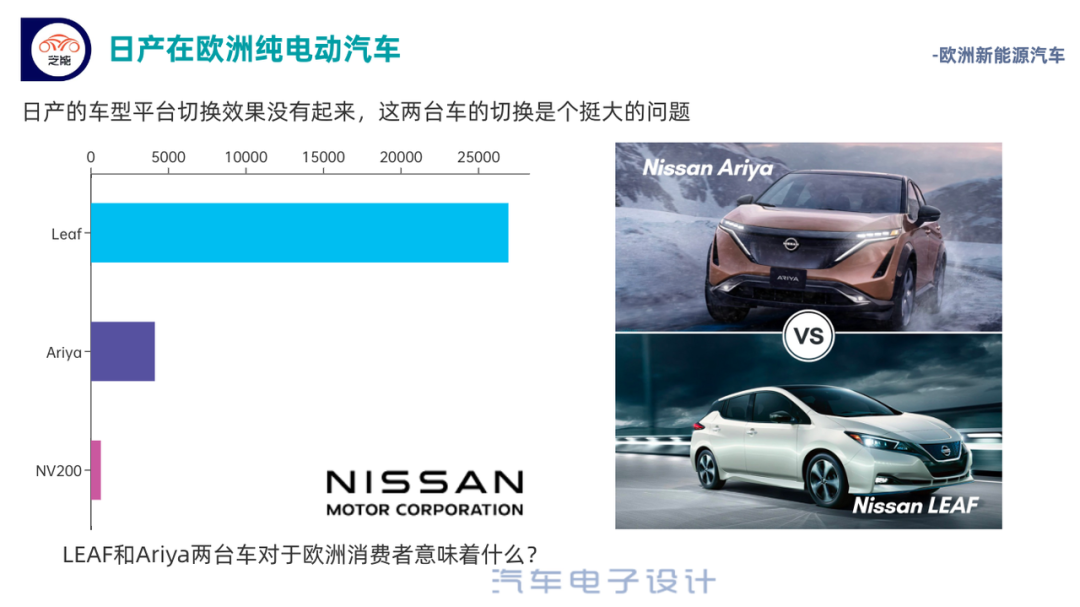
In 2022, Nissan’s LEAF sold slightly more than 12,000 units in the US, a 16% decrease from 2021, accounting for 1.8% of Nissan’s total sales.
◎Nissan Ariya: 201 (new)
◎Nissan Leaf: 12,025 units (down 16% YoY)
Nissan’s early efforts in pure electric vehicles in the United States have reached a total of 12,226 in 2022, a 14% decrease year-on-year, accounting for 1.8% of Nissan’s total North American sales. This is indeed a bit strange. From 30,000 units in 2014 to 12,000 units now, with the promotion of IRA, Nissan needs to promote the assembly and transformation of the entire vehicle and promote battery companies to land in North America. It may still rely on Farasis Energy’s battery factory in North America.No one will be satisfied with the performance report below.
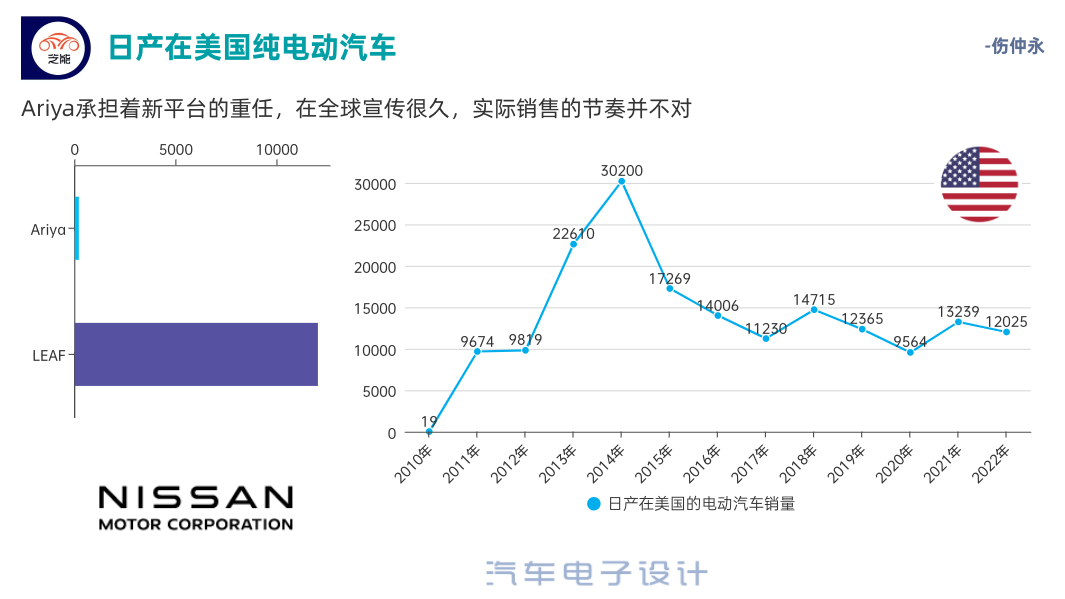
Summary: The automotive industry has indeed reached the elimination stage, and each enterprise must find its own way of survival. To gain the upper hand, not only must you act early, but you also need to continue to invest. Looking at Renault-Nissan’s electric vehicles, as two players who launched electric vehicles globally very early, it is heart-wrenching.
Next, we will focus on preparing for the domestic auto industry’s 2022 performance review series. Yesterday, we released the first article on NIO. At the beginning of the new year, many people are predicting the future trends of hot brands. Our ideas are similar. However, we want to start by reviewing the past, because the future trends are also implied in the decisions made and the roads taken before. Hopefully, this will give our readers some inspiration.
This article is a translation by ChatGPT of a Chinese report from 42HOW. If you have any questions about it, please email bd@42how.com.
